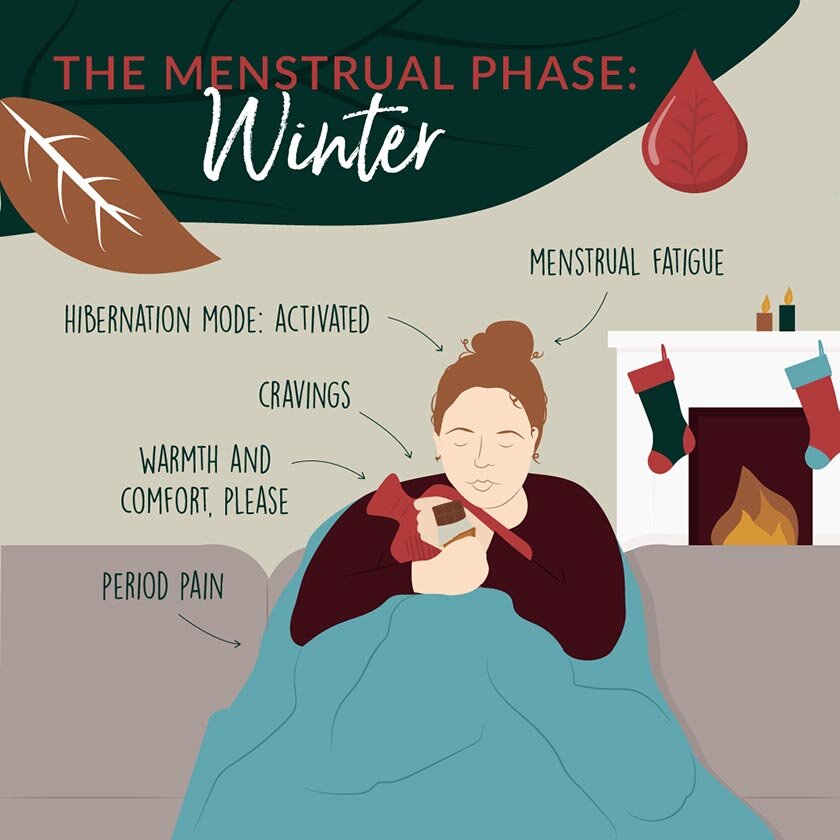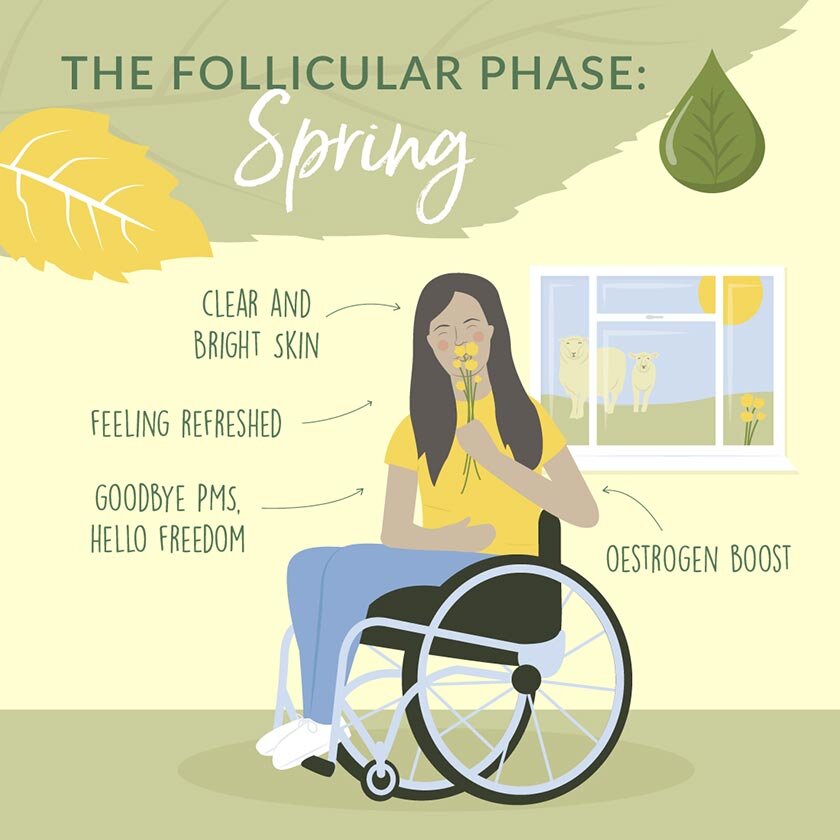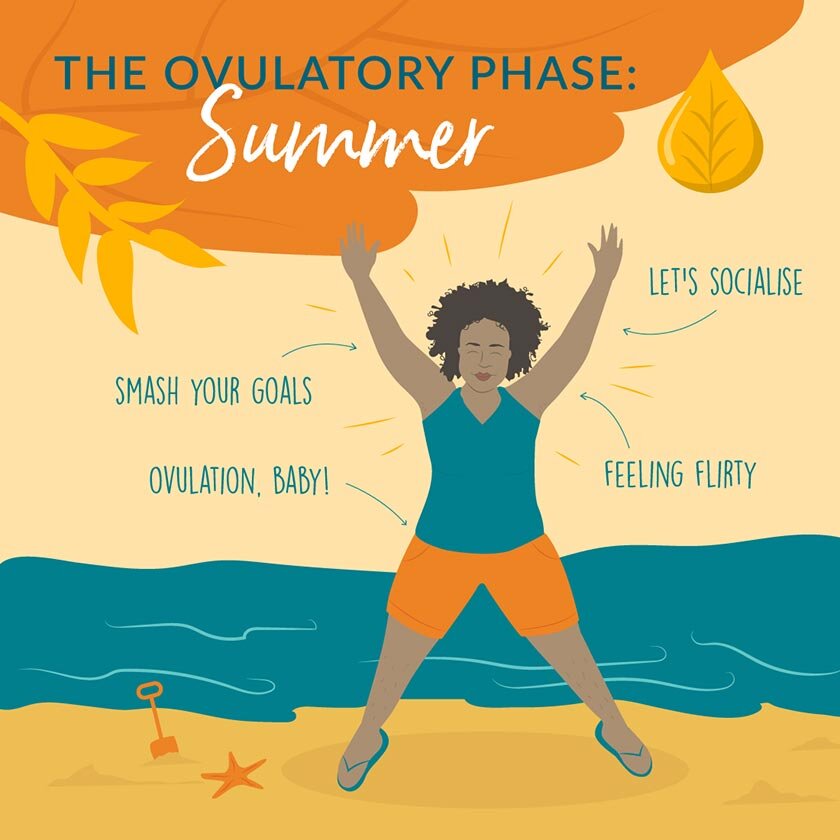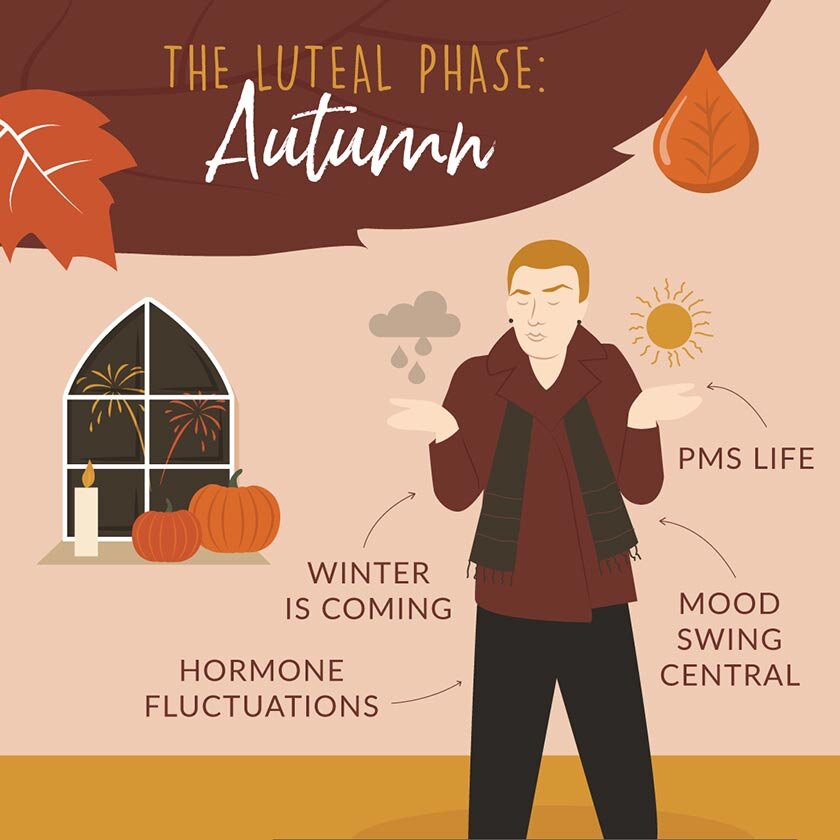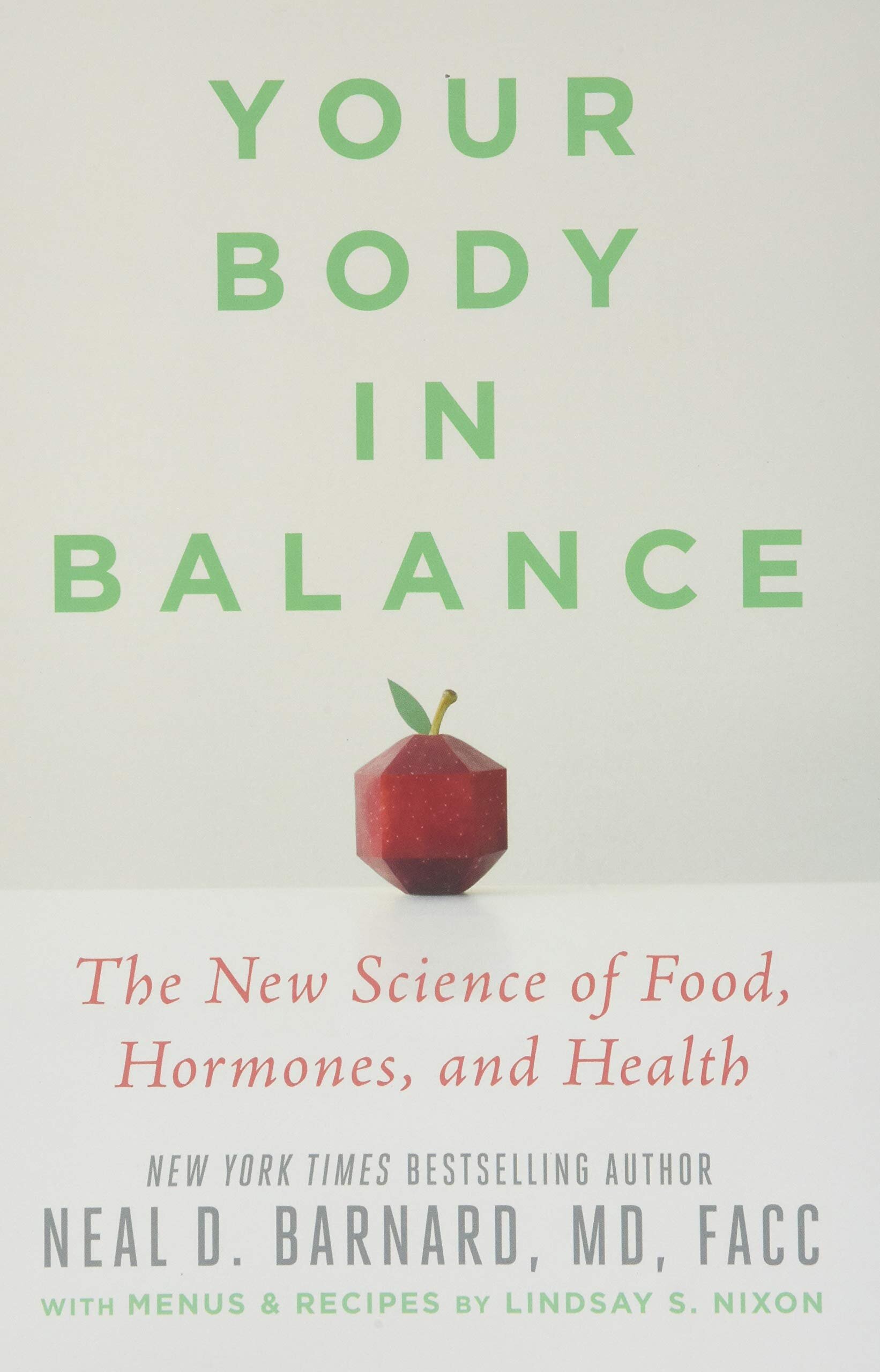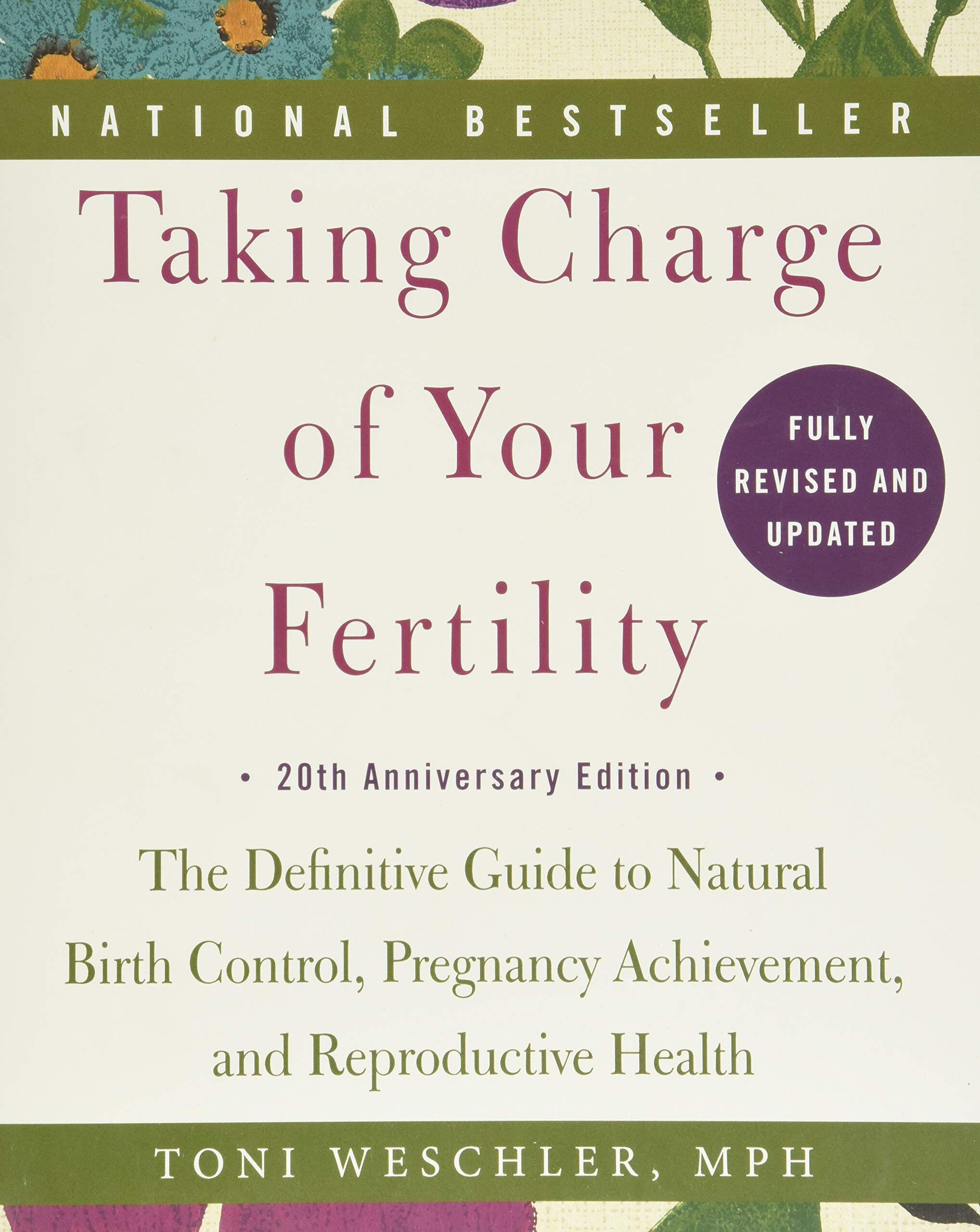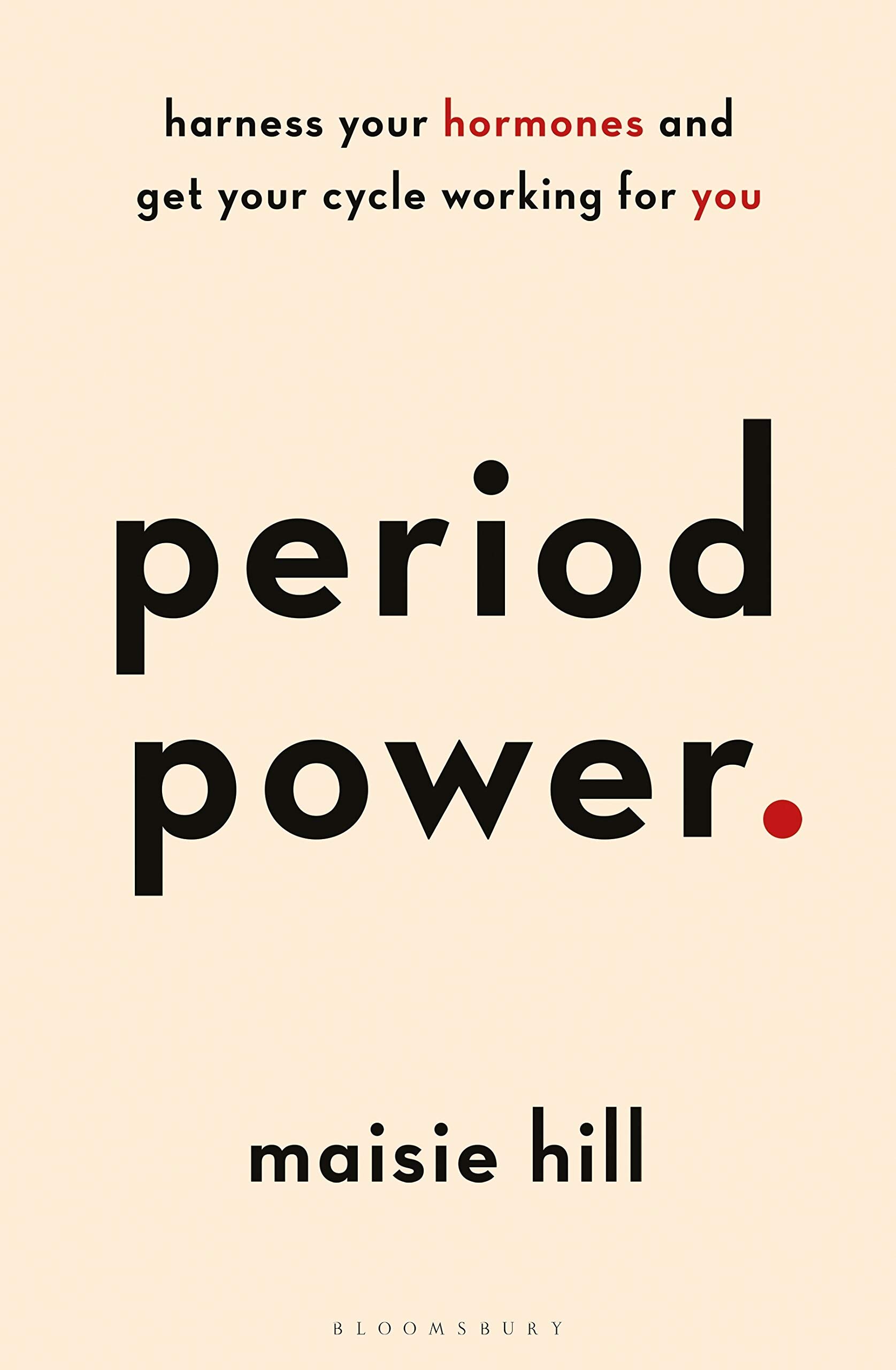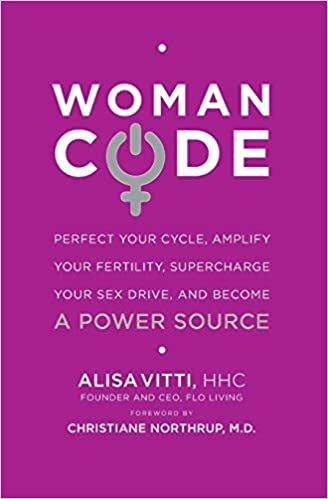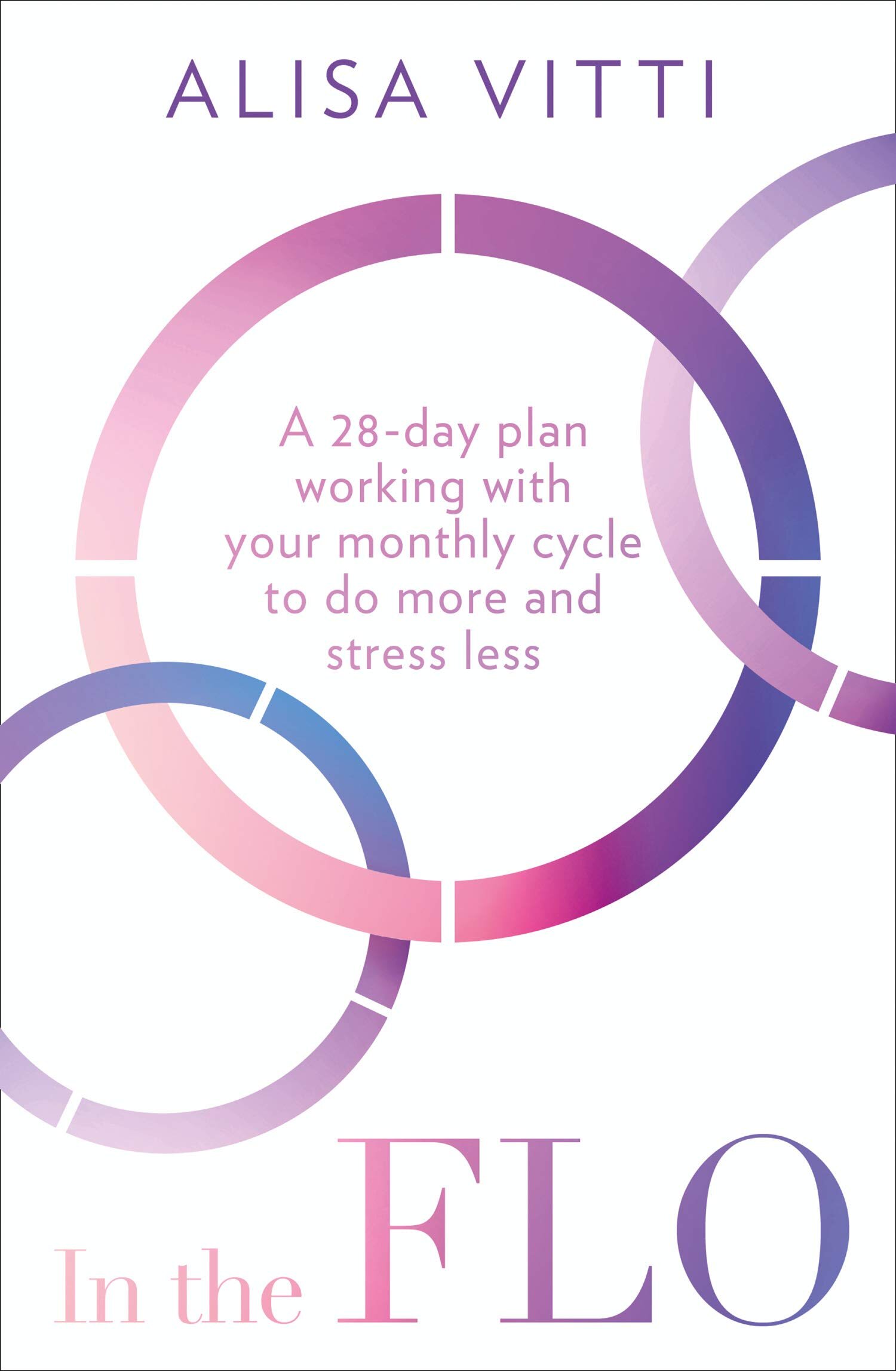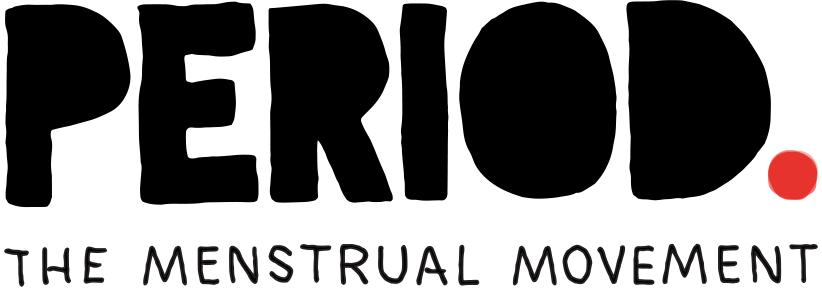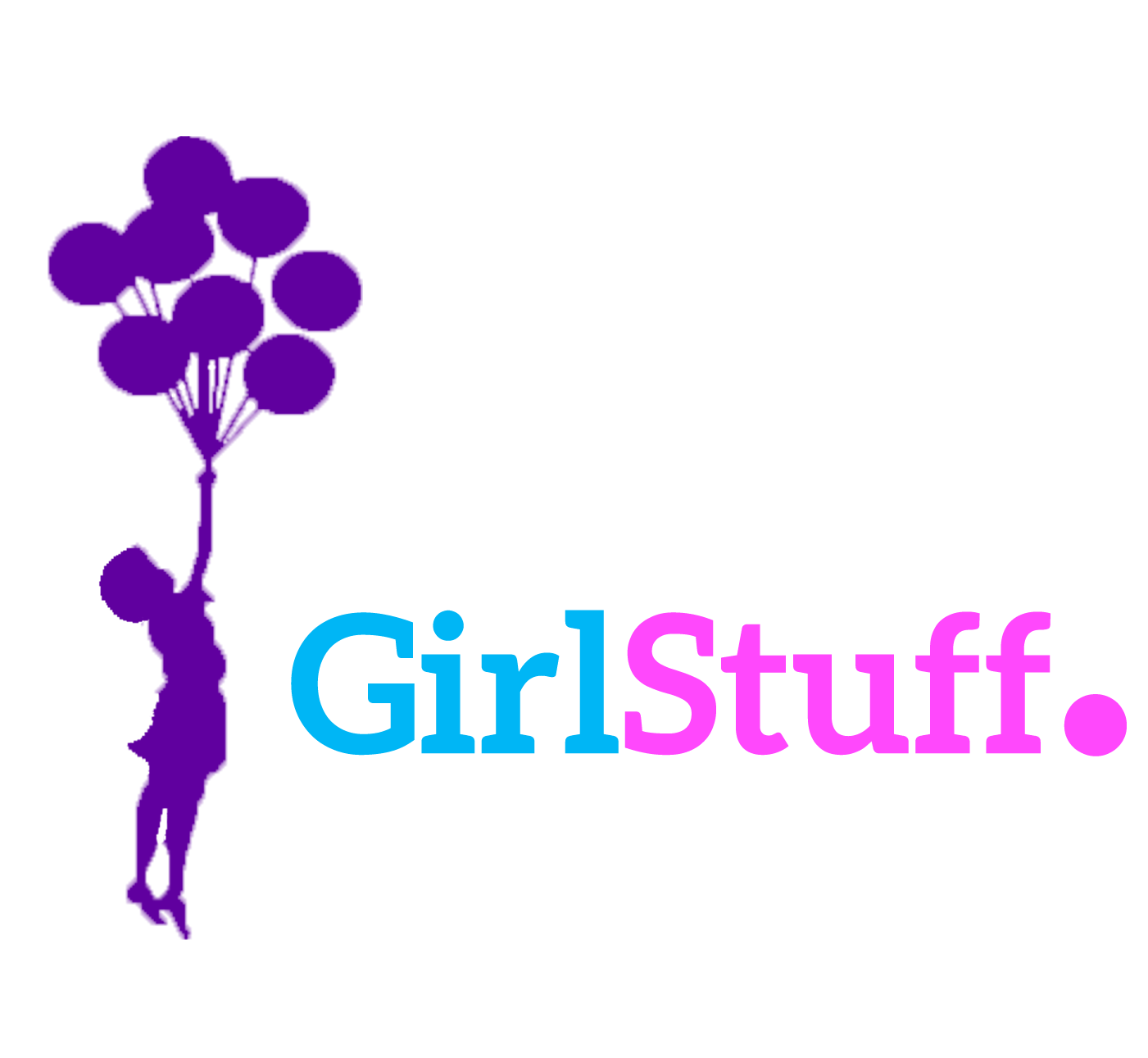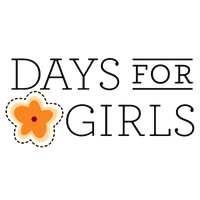go with the flow
This post is for women of all ages as well as men who want to educate themselves on women’s health to better support the women in their lives. The sad reality is that these topics aren’t openly discussed enough because of the stigma attached to them. Rather than being acknowledged as a beautiful and natural biological process, some consider it rude and embarrassing to discuss periods in certain parts of the world. Some even consider menstruation a “disease” because they do not understand the processes happening in a woman’s body. In the U.S., only 24 states mandate sex education which means that the other half of the country hasn't made it a requirement to educate our youth on women's reproductive health. When young men are not educated on the menstrual cycle, nonetheless involved in a discussion about reproductive health, they grow up to become adult men who are not necessarily supportive of women, especially during their cycle.
By avoiding these conversations and calling it “that time of the month” without acknowledging what it truly is, further disconnects us from the cycle of life. The true irony is that some men write women off as "crazy" or hard to deal with when a woman having a period is the only reason they exist today. Through increasing education, providing resources, and encouraging candid conversations surrounding women’s health, menstruation may one day no longer be a taboo subject and actually be celebrated for the beautiful and natural experience that it is. Teaching women of all ages to understand and appreciate each phase of their cycle can promote wellness and improve lives around the world.
food is medicine
According to new research, 43% of women say hormones have negatively affected their overall well-being. A survey of 2,000 American women, aged 30 to 60, also found that nearly half (47%) have experienced the symptoms of a hormonal imbalance of some kind, and one of the best ways to improve your hormonal health is to change and refine your diet. Eating the right kinds of foods during each stage of your cycle can help to balance your hormones, regulate your cycle, and ease any pain or discomfort. While there may be some benefits to eating certain types of foods during specific phases of your cycle, eating a variety of nutrient-rich foods, balanced meals that support stable blood sugar, and energy levels in the body, can make the most difference in your hormonal health.
“A healthy outside starts from the inside.”
I once suffered from extremely heavy and painful periods, especially when I decided to go off of hormonal birth control. After taking synthetic hormones for nearly a decade, choosing a natural approach to hormonal balance wasn’t as easy as I expected it to be. Despite the negative effects I encountered in the beginning through detoxifying my body of the endocrine disruptors, changing my diet and lifestyle was a gamechanger in overcoming difficulties related to my hormones and menstrual cycle. There is absolutely no need to suffer each month when we have control over what we put into our bodies. Every woman should be empowered to learn how to balance their hormones and make informed decisions about their own body autonomy.
the four phases of a menstrual cycle
Typically, the length of a woman’s entire menstrual cycle lasts anywhere between 25-36 days. In fact, only 10-15% of women have menstrual cycles that are exactly 28 days but it is commonly used in many examples such as the chart above. The length of your cycle is calculated from the first day of your period to the day before your next period starts. I highly recommend keeping track of your unique cycle to learn more about your body with the help of one of these apps:
You can also track your cycle simply with pen and paper or even an Excel spreadsheet. No matter how you do it, there are many benefits to bringing awareness to your cycle. It’s one of the greatest acts of self-care that you can give yourself. Since every woman is slightly different when it comes to their own cycle, look out for recurring patterns or any side effects such as your energy level, sleep quality, libido, appetite, cravings, digestion, bloating, skin health, and any emotional changes. How you care for yourself during each phase will set the tone for the rest of your cycle and overall health.
it’s the time of the season
Period Power. by Maisie Hill
Just like nature has its seasons, women experience them throughout their cycle and can be better understood by dividing it into different stages:
Winter ❄️ Menstruation Phase (1)
Spring 🌸 Follicular Phase (2)
Summer ☀️ Ovulatory Phase (3)
Autumn 🍁 Luteal Phase (4)
“When a woman connects with her magic, she creates the life of her dreams, and she lives her divinely contracted purpose.”
Menstruation coincides with the winter season where you may feel like you want to hibernate and conserve your energy. Then comes spring, or the follicular phase, which is the time between menses and ovulation when the focus of the ovaries is to grow follicles, out of which one will mature into an egg, in preparation for potential conception, similar to flowers budding and growing. Ovulation occurs midway through the cycle where you’re most fertile and the egg is released. If you don’t become biologically pregnant during ovulation, you then will move into the luteal phase or the season of autumn where our hormone levels are on a steady decline, and you start to feel our energy drop. Use your menstrual cycle as a compass that helps you navigate through each season so you know exactly what to expect so you can support yourself along the way.
moon cycle
Just like the moon, we all go through phases and our cycle also reflects each primary phase of the moon.
New Moon 🌚 Menstruation Phase (1)
Waxing Moon 🌗 Follicular Phase (2)
Full Moon 🌝 Ovulatory Phase (3)
Waning Moon 🌓 Luteal Phase (4)
The very word “menstruation” is derived from the Latin/Greek word “mene” meaning moon. It’s aligned with the tropical month (which is the 27.32 days it takes the moon to pass twice through the same point in its orbit) 13.1% of the time in women 35 years and younger and 17.7% of the time in women over 35, suggesting that menstruation is also affected by shifts in the moon's gravitational pull. Furthermore, the researchers observed greater synchronization between lunar and menstrual cycles during long winter nights, when women experienced prolonged exposure to moonlight. According to an analysis of over 7.5 million cycles, a woman’s menstrual cycle does not necessarily sync with the current lunar cycle, instead, it mimics each phase of the Moon. Since each woman’s cycle has a different length, theirs most likely will not mimic the exact 27.32 day Moon cycle, but at certain phases, when you’re lucky, your cycle will coincide with the moon phases and it will be a magical experience. Make it a habit to go outside and look at the moon, especially at night. Appreciate her in every phase. We all have so much to learn about being cyclical.
menstruation
Rest, reflect, and recharge
Lasts about 2-7 days
Menstruation (most commonly referred to as a “period”) is when a woman’s body discards the monthly buildup of the lining of her uterus or “womb”. The first day you bleed is considered day 1 of your menstrual cycle. Menstrual blood and tissue will flow from the uterus through the small opening in the cervix and pass out of the body through the vagina. The blood is the shedding of the uterine lining that is built up to support the fertilization of the egg which creates a new life. This phase can last anywhere between 3-5 days but a period lasting only 2 days to as many as 7 days is still considered normal. This all depends on a woman’s age, body weight, activity level, metabolic rate, hormones, etc.
During menstruation, a woman is simultaneously releasing menstrual blood which is a complex biological fluid composed of blood, vaginal secretions, and endometrial cells of the uterine wall as they exist immediately prior to menses. Rapid hormonal shifts prepare the body for ovulation and a spike in hormones, so hydrating in the form of pure water is essential to help transport nutrients throughout the body as well as consuming water-rich fruits and vegetables. When blood loss occurs during the shedding of the uterine lining, it’s essential to amp up nutrients such as iron. I am a big fan of supplementing with a natural form of vitamin C (in the form of fruit or acerola) for added iron absorption as well. Opt for foods with ample vitamins, minerals, water, protein, iron, as well as fiber. Studies have also shown that an increase in foods with vitamin E, omega 3 fatty acids, thiamin, vitamin B-6, and magnesium all help to reduce cramping and any negative effects associated with this cycle.
“Menstrual blood is the only source of blood that is not traumatically induced. Yet, in modern society, this is the most hidden blood, the one so rarely spoken of and almost never seen, except privately by women.”
To manage any menstrual symptoms like headaches, cramps, or bloating, increase the number of anti-inflammatory foods and culinary herbs that you consume. Focus on warm, comforting, and easy to digest foods rich in vitamins and minerals like iron and zinc that help compensate for the loss of blood and drop in energy. Insulin sensitivity is increased during menstruation so keep your fat intake low and choose low-glycemic fruits like berries and high fiber foods which benefit blood sugar balance. During this phase, your body uses carbohydrate (glycogen) stores more efficiently so your caloric need may be slightly lower due to your basal metabolic rate (BMR) being at its lowest. With that said, to ensure performance and recovery is optimal, eat a predominately whole food plant-based diet. Save the juice cleansing and detox protocols for another cycle such as the follicular or ovulatory phases when you feel stronger. This is the coolest phase in our cycle so bringing more warmth to your body and spirit will help the most.
NUTRITION FOR THE MENSTRUAL PHASE
Water: Hydrate with at least 2-3 liters of purified or spring water to promote the transportation and absorption of nutrients.
Fruits: Enjoy melons, acid fruits, sub-acid, and sweet fruits in abundance.
Vegetables: Enjoy green leafy vegetables, sprouts, non-starchy vegetables, and starchy vegetables in abundance.
Antioxidants: Blueberries, strawberries, raspberries, acai berry bowls, dried goji berries, cranberries, and pomegranates.
Vitamin B-6: Bananas, oranges, avocados, sweet potatoes, potatoes, acorn squash, corn, quinoa, sunflower seeds, corn on the cob, oats, Brussel's sprouts, spring greens, chestnuts, hazelnuts, tahini, and pistachio nuts.
Vitamin B12: Supplement with a tincture or spray to keep the body's blood and nerve cells healthy.
Vitamin C: Guava, kiwi, bell peppers, strawberries, oranges, papaya, broccoli, tomato, snow peas, and kale.
Vitamin E: Sunflower seeds, almonds. peanuts, hazelnuts, beet greens, collard greens, spinach, pumpkin, red bell pepper.
Omega 3 Fatty Acids: Chia seeds, hemp seeds, flax seeds, walnuts, seaweed, algae, Brussels sprouts, and winter squash.
Iron: Dried apricots, green peas, potatoes, spinach, quinoa, blackstrap molasses, lentils, leeks, cashews, acorn squash, squash, and pumpkin seeds.
Magnesium: Spinach, chard, avocado, almonds, cashews, black beans, pumpkin seeds, sesame seeds, sunflower seeds, bananas, and cacao.
Zinc: Hemp seeds, oats, chickpeas, lentils, quinoa, wild rice, potatoes, black beans, cashews, sunflower seeds, peas, almonds, and pumpkin seeds.
Herbal Teas: Red raspberry leaf, ginger, chamomile, peppermint, cinnamon, stinging nettle, oolong, thyme, rosemary, and green tea.
Herbs: Anti-inflammatory herbs such as turmeric, ginger, cinnamon, cayenne, cardamom, cumin, garlic, parsley, oregano, and hormone supporting herbs such as chaste berry (vitex) or dong quai.
Spices: Cinnamon, turmeric, ginger, fennel, cloves, cardamom, cumin, garlic, and parsley.
AVOID THE FOLLOWING FOODS
Processed foods: Items made with chemicals and preservatives can make bloating and water retention worse. High levels of sodium are unhealthy at any time of the month, but they can impact you even more during your period.
Refined sugar with excess fat: This combination can contribute to gas and bloating while delivering a short-term spike in blood sugar since excess fat can impair the responsiveness of the cell membrane to insulin-mediated actions which contributes to increased insulin resistance. A brief sugar high like this inevitably leads to a major crash, leaving you feeling worse off. Always keep high sugar foods separate from high-fat foods for increased insulin sensitivity.
Caffeine: This can actually overstimulate the body by exacerbating irritability and making soreness and breast tenderness much worse. Cut out all stimulants and watch your hormonal health improve.
Alcohol: The loss of blood at this time lowers your blood pressure, making you more vulnerable to alcohol’s side effects. It also aggravates fatigue and boosts menstrual flow.
Spicy foods: Eating overly spicy and rich food can irritate your gut, which leads to ulcers, and can even increase abdominal pain. Avoid spicy flavors and foods during menstruation and your tummy will be much happier.
Your energy most likely will dip and be at the lowest at the start of your period, so be sure to honor your body’s needs and rest as much as you need to. Look inward, listen to your instincts, and set goals that you can achieve during the next part of your cycle when you have more energy. Ask for help when you need it and make sure you are getting the emotional support that you need. Cut off anyone or anything that further drains your energy this time. For the first few days of your cycle, aim for gentle stretching and walking, then you feel your energy return, you can turn exercising up as this can be a great phase to gain maximum benefit from cardio and strength training. A review of 78 studies on the menstrual cycle and exercise performance found no evidence that having your period can harm your athletic performance. Every woman is unique in this case so always take a personalized approach when it comes to exercise. The most important thing you can do during this state is to get enough sleep, even more than you think you need. This will balance out your hormones and protect your immune system making you less susceptible to getting sick.
lack of menstruation
Your menstrual cycle tells you a lot about your health, including a lack of one. The absence of menstruation is called amenorrhea and is defined as missing one or more menstrual periods. This is not about having irregular periods. If you have amenorrhea, you never get your period which is not normal or healthy. Hypothalamic Amenorrhea is a commonly occurring medical condition in women of childbearing age who also have eating disorders. The body enters survival mode, periods stop, and women will not be able to reproduce. A diagnosis of HA is only made after other causes of amenorrhea are ruled out. However, in the case of an eating disorder, HA is a likely cause, even when weight is not extremely low.
An energy deficit occurs when a person eats too little compared with the energy they expend. A chronic energy deficit causes body mechanisms to conserve fuel for critical body processes. Less vital body functions are put on hold. This includes reproduction, which can actually be hazardous to survival—when energy is insufficient, energy and metabolic functions suppress the release of ovarian hormones by the hypothalamus.
The contributing factors to hypothalamic amenorrhea include energy imbalance, food restriction, weight loss, exercise, stress, and genetics. Each person expresses these factors differently, and each factor contributes in varying degrees. If you are experiencing an eating disorder, be sure to get help from a professional. Working with a therapist, a nutritionist, and a medical doctor who has experience with eating disorders can help you recover from HA. Treatment includes focusing on getting enough nutrition, exercising less, and learning how to manage stress and cope with life’s difficulties in healthier ways.
2. the follicular phase
Ready, set, go for it!
Lasts about 7-10 days
The follicular phase is the second part of your cycle that begins immediately after menstruation and ends with ovulation. This is where your body moves into its “inner spring” or “waxing moon” phase and accounts for the first half of the menstrual cycle. Prompted by the hypothalamus, the pituitary gland releases follicle-stimulating hormone (FSH) which stimulates the growth of eggs in the ovaries. FSH levels in women change throughout the menstrual cycle, with the highest levels happening just before an egg is released by the ovary. You may notice higher energy levels, better skin, and increased libido as estrogen starts to rise. This is a great time to tackle new projects, take on mentally and physically challenging tasks, embrace new experiences, and get outside your comfort zone.
To have a successful follicular phase, focus on balancing rising estrogen levels and nourish your growing follicles by eating fresh and vibrant foods that can metabolize estrogen as efficiently as possible. Eat more insoluble fiber from fruits with edible peels and seeds, like apples, bananas, cucumber, zucchini, celery, along with root vegetables like carrots, parsnips, and sweet potatoes. Add in sprouted and fermented foods like broccoli sprouts, kimchi, and sauerkraut to promote healthy digestion as well as a small amount of pumpkin and flax seeds to prepare hormones that are about to peak that flush out any excess estrogen out of the body. This will aid in recovery and protect against injury which women are more susceptible to during this phase. While your blood sugar levels are more stable, you may notice a reduced hunger since higher estrogen levels can curb your appetite. From an evolutionary perspective, your biology is encouraging you to spend more time searching for a mate than searching for food. Luckily, prior to ovulation, your body is efficiently utilizing your carbohydrate stores to keep you going. Still, you need to fuel high-intensity efforts and longer endurance workouts with enough carbohydrates before and after to ensure performance and recovery are optimal.
NUTRITION to support THE follicular PHASE
Water: Hydrate with at least 2-3 liters of purified or spring water to promote the transportation and absorption of nutrients.
Fruits: Enjoy melons, acid fruits, sub-acid, and sweet fruits in abundance.
Vegetables: Enjoy green leafy vegetables, sprouts, non-starchy vegetables, and starchy vegetables in abundance.
Antioxidants: Blueberries, strawberries, raspberries, acai berry bowls, dried goji berries, cranberries, and pomegranates.
Vitamin B-6: Bananas, oranges, avocados, sweet potatoes, potatoes, acorn squash, corn, quinoa, sunflower seeds, corn on the cob, oats, Brussel's sprouts, spring greens, chestnuts, hazelnuts, tahini, and pistachio nuts.
Vitamin B12: Supplement to keep the body's blood and nerve cells healthy.
Vitamin C: Guava, kiwi, bell peppers, strawberries, oranges, papaya, broccoli, tomato, snow peas, and kale.
Vitamin E: Sunflower seeds, almonds. peanuts, hazelnuts, beet greens, collard greens, spinach, pumpkin, red bell pepper.
Omega 3 Fatty Acids: Chia seeds, hemp seeds, flax seeds, walnuts, seaweed, algae, Brussels sprouts, and winter squash.
Iron: Dried apricots, green peas, potatoes, spinach, quinoa, blackstrap molasses, lentils, leeks, cashews, acorn squash, squash, and pumpkin seeds.
Magnesium: Spinach, chard, avocado, almonds, cashews, black beans, pumpkin seeds, sesame seeds, sunflower seeds, bananas, and cacao.
Zinc: Hemp seeds, oats, chickpeas, lentils, quinoa, wild rice, potatoes, black beans, cashews, sunflower seeds, peas, almonds, and pumpkin seeds.
Herbal Teas: Red raspberry leaf, ginger, chamomile, peppermint, cinnamon, stinging nettle, oolong, thyme, rosemary, and green tea.
Herbs: Anti-inflammatory herbs such as turmeric, ginger, cinnamon, cayenne, cardamom, cumin, garlic, parsley, oregano, and hormone supporting herbs such as chaste berry (vitex) or dong quai.
Spices: Cinnamon, turmeric, ginger, fennel, cloves, cardamom, cumin, garlic, and parsley.
Get fired up about your follicular phase! Confidence is key and the ball is in your court. This is the perfect time to get out of your comfort zone and show the world who you truly are. Schedule a fun activity with friends or plan a steamy date night. This is your time to try new things with your social and work life. Take on challenges. Try a higher impact workout to match your higher energy levels. Think heavy lifting, longer and faster runs, or hot yoga. Your brain is sharp and you’re ready to problem solve. This is the time to plot world domination. If you’ve been procrastinating on your next goal, now is the time to take assertive action. You can do this!
3. ovulatory phase
Be strong, playful, and sociable
Lasts about 24 hours but you can be fertile for about 4-5 days
Ovulation is the release of a mature egg from the surface of the ovary. This usually occurs mid-cycle, around two weeks or so before menstruation starts. During the follicular phase, the developing follicles cause a rise in the level of estrogen. As estrogen continues to rise, testosterone peaks and then immediately fall right around ovulation. Ovulation is when a woman’s body is most fertile and releases an egg. It is the culmination of all the hard work a woman’s body has been doing over the last couple of weeks. A normal ovulation cycle lasts for about 24 to 48 hours, but you can potentially be fertile for up to seven days, and maybe up to 10 days, according to the most optimistic studies. This is because sperm can survive up to five days in the female reproductive tract. Once an egg is released from an ovary, it will die or dissolve within 12 to 24 hours if it's not fertilized. If fertilization doesn't occur, the egg and uterine lining will shed which results in menstrual bleeding about two weeks later after the luteal phase.
At birth, a female carries approximately 1 to 3 million eggs, which are gradually lost throughout a woman's life. By the time of puberty, only about 300,000 remain. Of these, only 300 to 400 will be ovulated during a woman's reproductive lifetime. Fertility can drop as a woman ages due to decreasing number and quality of the remaining eggs. Menopause then occurs naturally when a woman's ovaries run out of functioning eggs. So how do you know when you are actually ovulating? This can be tricky to pinpoint at first but the more you track your cycle, the more you’ll be able to spot patterns. The calendar method can only take you so far, so be sure to take your basal body temperature every morning before you get out of bed. When you ovulate, your cervical mucus becomes clearer and thinner with a more slippery consistency similar to that of egg whites. Watch out for symptoms like heightened senses, breast tenderness, mild pelvic or lower abdominal pain, changes in the position of your cervix where it slightly opens up. Period coach Mariah Berendt encourages women to “learn to read the language of your body” so they can understand their cycle better.
This phase is our “inner summer” where we are ready to get outside and show the world who we are. Your confidence tends to run high and you’re much more outspoken and bolder than usual. This phase also syncs up with the energy of a “full moon”, which is about birthing new projects into the world. Take advantage of your powerful feminine nature during this time! This is the best time to change your diet, especially eat a raw food diet. Your body is strong and estrogen and the luteinizing hormone just peaked so any cravings should be at an all-time low. Also, reach for magnesium-rich foods to help to balance estrogen and progesterone. Get on the greens and make large salads full of green leafy vegetables and non-starchy vegetables rich in glutathione, an antioxidant that can help your body flush out excess estrogen. Add in a small handful of nuts and seeds for extra zinc to support progesterone. Since your body temperature will be rising which means you’ll be sweating a lot more during exercise, be sure to hydrate your body as much as possible and consider adding hydration salts to your water first thing in the morning. To prepare for the next and last phase and prevent premenstrual symptoms, load up again on anti-inflammatory foods rich in vitamin D, calcium, omega-3, and B-vitamins.
NUTRITION to support ovulation
Water: Hydrate with at least 2-3 liters of purified or spring water to promote the transportation and absorption of nutrients.
Fruits: Enjoy melons, acid fruits, sub-acid, and sweet fruits in abundance.
Vegetables: Enjoy green leafy vegetables, sprouts, non-starchy vegetables, and starchy vegetables in abundance.
Antioxidants: Blueberries, strawberries, raspberries, acai berry bowls, dried goji berries, cranberries, and pomegranates.
Vitamin B-6: Bananas, oranges, avocados, sweet potatoes, potatoes, acorn squash, corn, quinoa, sunflower seeds, corn on the cob, oats, Brussel's sprouts, spring greens, chestnuts, hazelnuts, tahini, and pistachio nuts.
Vitamin B12: Supplement with a tincture or spray to keep the body's blood and nerve cells healthy.
Vitamin C: Guava, kiwi, bell peppers, strawberries, oranges, papaya, broccoli, tomato, snow peas, and kale.
Vitamin E: Sunflower seeds, almonds. peanuts, hazelnuts, beet greens, collard greens, spinach, pumpkin, red bell pepper.
Omega 3 Fatty Acids: Chia seeds, hemp seeds, flax seeds, walnuts, seaweed, algae, Brussels sprouts, and winter squash.
Iron: Dried apricots, green peas, potatoes, spinach, quinoa, blackstrap molasses, lentils, leeks, cashews, acorn squash, squash, and pumpkin seeds.
Magnesium: Spinach, chard, avocado, almonds, cashews, black beans, pumpkin seeds, sesame seeds, sunflower seeds, bananas, and cacao.
Zinc: Hemp seeds, oats, chickpeas, lentils, quinoa, wild rice, potatoes, black beans, cashews, sunflower seeds, peas, almonds, and pumpkin seeds.
Herbal Teas: Red raspberry leaf, ginger, chamomile, peppermint, cinnamon, stinging nettle, oolong, thyme, rosemary, and green tea.
Herbs: Anti-inflammatory herbs such as turmeric, ginger, cinnamon, cayenne, cardamom, cumin, garlic, parsley, oregano, and hormone supporting herbs such as chaste berry (vitex) or dong quai.
Spices: Cinnamon, turmeric, ginger, fennel, cloves, cardamom, cumin, garlic, and parsley
This is the time to have any difficult conversations that you’ve been avoiding. It’s ideal for connecting with others, public speaking, and starting new things. It’s also a great time for endurance and strength training because your energy is at an all-time high. Focus on weight lifting and resistance exercises too. Longer easy runs or hilly hikes are great if you are running. In order to ensure you’re using your fat-burning energy system rather than your glycogen-fuelled systems, keep cardio sessions at a light, conversational pace. You should be slightly out of breath, but able to go for quite a while still being able to talk.
Post ovulation, your body becomes better at using fat for energy, which is great for sustaining any steady-state aerobic or longer endurance training. Your BMR (basal metabolic rate) climbs during the luteal phase, peaking around halfway through. This means the minimum number of calories your body needs to function will be higher, and you’ll be burning more calories through the process of digestion too.
4. the luteal phase
Focus, prepare, and take time for self-care
Lasts about 12-16 days
This is the final and longest phase of your cycle (before it starts again with menstruation) and is considered your “inner autumn” or waning moon phase. Similar to the autumn season, now is the best time to prepare and focus on ‘harvesting’ all the work you’ve done in spring and summer, and start to slow your body down. During this phase, both progesterone and estrogen levels are high but once progesterone stops being produced, it signals the start of your next period. This phase tends to be the longest in your cycle and can last for about 12 to 16 days. Oftentimes, during the second half of this phase, you’ll find that your energy begins to drop, and those familiar PMS symptoms may start to kick in. To combat this, pay attention to your body, and be sure to give it the gentleness and care it needs if you find yourself getting irritable, bloated, having mood swings, or experiencing intense cravings.
This is a time when your metabolism increases and you get even more hungry so please be sure to respect your hunger cues and do not undereat during this stage. Now is the time to eat a lot of carbohydrate-rich whole foods with lots of fiber to flush out any extra estrogen which can contribute to PMS. Shoot for calorically-dense sweet fruits like bananas, mangoes, and dates along with grounding and warming root vegetables, such as sweet potatoes, carrots, and squash. These fertility-preserving foods contain plenty of beta-carotene which helps in regulating hormones and encouraging cell growth. Cruciferous vegetables like broccoli, cauliflower, and kale are also essential in keeping neurotransmitters balanced and warding off any PMS symptoms. Plus, you want to eat foods that aid in mood serotonin production and that are rich in magnesium which can fight against fatigue and cramp pain. Eating every 3 or 4 hours can also help you to manage blood sugar levels and avoid cortisol spikes or mood swings.
NUTRITION FOR THE luteal PHASE
Water: Hydrate with at least 2-3 liters of purified or spring water to promote the transportation and absorption of nutrients.
Fruits: Enjoy melons, acid fruits, sub-acid, and sweet fruits in abundance.
Vegetables: Enjoy green leafy vegetables, sprouts, non-starchy vegetables, and starchy vegetables in abundance.
To reduce water retention: Cucumber, apple, banana, cantaloupe, broccoli, orange, lemon, grapefruit, spinach, cabbage, beets, cauliflower, and avocado.
Vitamin B12: Supplement with a tincture or spray to keep the body's blood and nerve cells healthy.
Vitamin C: Guava, kiwi, bell peppers, strawberries, oranges, papaya, broccoli, tomato, snow peas, and kale.
Calcium: Celery, kale, collards, turnip greens, okra, gooseberries, sesame seeds, chia seeds, almonds, dried figs, tofu, white beans, sunflower seeds, broccoli, brussels sprouts, and kohlrabi.
Vitamin D: Supplement with a tincture or spray to reduce any PMS symptoms.
Vitamin E: Sunflower seeds, almonds. peanuts, hazelnuts, beet greens, collard greens, spinach, pumpkin, red bell pepper.
Omega 3 Fatty Acids: Chia seeds, hemp seeds, flax seeds, walnuts, seaweed, algae, Brussels sprouts, and winter squash.
Iron: Dried apricots, green peas, potatoes, spinach, quinoa, blackstrap molasses, lentils, leeks, cashews, acorn squash, squash, and pumpkin seeds.
Magnesium: Spinach, chard, avocado, almonds, cashews, black beans, pumpkin seeds, sesame seeds, sunflower seeds, bananas, and cacao.
Zinc: Sunflower and sesame seeds to help stimulate the production of progesterone. Hemp seeds, oats, chickpeas, lentils, quinoa, wild rice, potatoes, black beans, cashews, peas, almonds, and pumpkin seeds.
Herbal Teas: Red raspberry leaf, ginger, chamomile, peppermint, cinnamon, stinging nettle, oolong, thyme, rosemary, and caffeine-free green tea.
Herbs: Anti-inflammatory herbs such as turmeric, ginger, cinnamon, cayenne, cardamom, cumin, garlic, parsley, oregano, and hormone supporting herbs such as chaste berry (vitex) or dong quai.
Spices: Cinnamon, turmeric, ginger, fennel, cloves, cardamom, cumin, garlic, and parsley.
During the mid to late luteal phase, your attention is starting to turn inward and you feel a desire to nest and spend time at home catching up with chores and any administrative tasks. You may feel a lot more sleepy after ovulation due to increased levels of progesterone. During this part of the luteal phase where progesterone levels are high, there is more non-REM sleep and reduced REM sleep. You may want to wind down your exercise routine in the final week of your cycle before menstruation starts. Focus on calming and low resistance workouts like walking, yoga, or pilates. Prioritize your flexibility and stretch more. Listen to your body and honor it with what it needs.
how heal pms
Premenstrual syndrome (PMS) is a set of physical, emotional, and behavioral symptoms that occur during the last week of the luteal phase (about 1 to 2 weeks before menstruation). Symptoms typically start 5 days before menstruation begins and go away within 4 days after bleeding starts. Not every woman who experiences symptoms have a clinical diagnosis of PMS. Since every woman is unique and different, the best way to work around these symptoms is to figure out your unique patterns and what solutions work best for relieving your symptoms. Plan to manage premenstrual symptoms (PMS) by targeting vitamin D, calcium, magnesium, omega-3, and B vitamins.
For cramps: Eat a fiber-rich diet that helps to improve digestion and prevent constipation. Light movement and massage can help to stimulate circulation to ease any pain. Increase your magnesium content which helps to relax uterine muscles that contract. Focus on key nutrients such as B vitamins, vitamin D, Omega 3s, and zinc. Use Epsom baths with baking soda and essential oils such as lavender, clary sage, marjoram, rose, and clove. Herbs such as ginger, turmeric, vitex, dong quai, valerian, lemon balm, cats claw, fennel, and maca may help improve dysmenorrhea-related symptoms and reduce inflammation. Be sure to drink enough water to prevent dehydration which can lead to pain and inflammation.
For moodiness: To stabilize mood swings, focus on these four areas: Exercise, nutrition, sleep, and stress management. Although it may feel difficult to try, moving your body will improve your mood by increasing circulation, releasing endorphins, to release any stagnant energy. Choose from your favorite such as walking, running, riding a bike, swimming, or any activity that gets your heart rate up in a healthy way. Nourish your body with a healthy diet and supplement when needed. Get a healthy amount of sleep (at least 8-9 hours during this phase if you can) and reduce your stress by talking with a friend or therapist, and most importantly, do more of what you love doing!
For sleep issues: Rest is crucial for hormonal health so focus on relaxing activities like breathing exercises, meditation, or yoga. Listen to relaxing frequencies and sound baths before bed. Be sure to stop using all electronics a few hours before bed. Experiment with relaxing herbs and supplements such as valerian root, lemon balm, lavender, chamomile, passionflower, melatonin, tryptophan, and magnesium.
For cravings: Stabilize cravings by getting enough water, fiber, complex carbohydrates such as fruits, vegetables, and whole grains (if you can tolerate them) as well as sufficient plant protein sources. Check for any nutritional deficiencies and correct them by supplementing. Eat smaller, more frequent meals to reduce bloating and the sensation of fullness. Limit added salt to reduce bloating and fluid retention. Avoid caffeine and alcohol since this impacts your appetite making you more susceptible to cravings.
connect with your womb
The womb (also called the uterus) is an inverted pear-shaped muscular organ of the female reproductive system where a fetus (unborn baby) develops and grows. Energetically, the womb is a sacred space where a woman’s sensuality, intuition, and power originate. It coincides with the 2nd chakra located just below the navel, right in the center of your lower belly, and in your back, it is located in the lumbar spine and associated with the color orange and the element, water. The sacral chakra is the center of our emotions, feelings and stimulates pleasure, and plays an active role in our sexuality and the expression of our needs and desires. By allowing yourself to creatively express yourself and feel pleasure,
To connect with your sacral chakra, you can state say the affirmations below:
I love and respect my body
I am creative, passionate, and inspired
I embrace pleasure, intimacy, and connection
I give myself full permission to feel good and enjoy my life
how to heal your womb
“The womb is your sacrad chalice of wisdom. A place where unprocessed emotions, trauma, and ancestral pain can be stored. To heal as a whole, we need to be looking at the spiritual health of the womb as much as the physical. It is within spiritual health where we can see the scars beyond the physical body.”
Through the process of womb healing, you can awaken your feminine womb space and release any pain, trauma, and old patterns you may be carrying around. Women have the ability to create and bring new life into the world so follow these steps to manifest healing and vibrant health into your own life:
Empower yourself with knowledge. Learn more about the female reproductive anatomy is the first step to healing any issues associated with your hormones, cycle, and/or fertility.
Honor your sacred vessel by deep breathing anytime stress or an imbalance arises.
Change your diet and properly detoxify your body by getting rid of toxic chemicals in your food, body care, and household products.
Track your menstrual cycle and pay attention to the cycles of the moon and seasons
Connect with orange crystals like carnelian, citrine, golden healer quartz, amber, peach moonstone, tangerine quartz, and sunstone.
Say daily affirmations that support your divine vessel
Be creative. Step into your creative power and honor it. Paint, dance, write, journal, sing, take photos and videos of your favorite things.
Move your body through nurturing practices like yoga, belly dancing, move your hips
Spend more time with mother nature outside and take off your shoes and ground with the Earth’s electromagnetic frequency.
Release unhealthy attachments, codependence, fear, and shame. The womb is a container so birth it, dissolve it, release it, and let it go. Affirm that you lovingly let go of whatever no longer serves you.
Fast from sexual practices and other people’s energy until you feel balanced and whole. Connect with your own powerful sacral energy before allowing anyone else into your sacred space.
Always listen to your intuition when it comes to your body and your health and act on them whenever it feels necessary.
additional resources
There is so much information out there when it comes to heart health, digestive health, mental health, and every area of health, except women’s hormonal health. Information on how to balance hormones naturally especially when there are millions of products marketed towards women that disrupt their endocrine function. We’re all still learning about the complex system of a woman’s anatomy and physiology. Most women, like me, learn as they go and fall susceptible to suppressing their symptoms with synthetic hormones making their journey to balance more difficult. Luckily things are changing and women are talking more about what we’re going through. These books are a few of my favorite resources when it comes to improving a woman’s hormonal health.
BREAK the stigma
Around the world, many girls and women have to give up going to school, places of worship, and even attending social interactions simply because they menstruate. These stigmas are caused by a lack of education that fuels myths that ostracize and humiliate women during their monthly cycles and further prevent access to sanitary products. Approximately 70% of all reproductive diseases in India are caused by poor menstrual hygiene and shockingly, only 36% of women in India use sanitary pads during their periods. Many of them are stuck with reusable rags. This is unacceptable.
Menstruation is a necessary biological function experienced by half of the global population yet, still considered a “dirty” word in countries all over the world. The stigma around menstruation is further exemplified by the many euphemisms that exist: “that time of the month,” “Aunt Flo,” “on the rag,” “shark week”, etc. and that’s just in English. A study conducted by the International Women’s Health Coalition found that there are about 5,000 slang words used to refer to menstruation in 10 different languages. These misogynist attitudes from cultures all over the world have developed detrimental concepts and beliefs about menstruation furthering health issues for young girls and women.
The average woman spends nearly 7 years of her life menstruating. Despite this, period poverty exists. In the U.S. today, 25 million women live in poverty and food stamps don't cover menstrual products. Now 1 in 4 women now struggled to purchase period products in the supposed “free world”. With 1 in 5 girls missing school due to lack of menstrual products, period poverty is an important, yet ignored public health crisis. Access to menstrual products is a human right, and feeling clean, confident, and capable during your period is a necessity. Please consider donating to one of the organizations below and raising awareness to end period poverty in our world.
period essentials
Having your period in the 21st century should not interfere with your everyday life. There is a wide range of products to keep you feeling comfortable. When choosing what’s right for you, consider factors such as what activity you will be doing, the cost of the product, convenience of use, and the product’s impact on the environment. Just be sure to give all of these options a fair try first. Click on the links below to see which products I use and recommend.
Remember, what feels best is what’s best for you. I personally like to use a combination of all of these to give myself options and choose what I need. I like to wear reusable pads whenever I’m at home, tampons when I’m working out, menstrual cups if I’m away from home all day, and period underwear when my flow is light and don’t want to wear anything else. What I’ve learned over the past 27 years of menstruating is that supporting yourself and your unique needs will always benefit your cycle. We deal with enough judgement from the world around us. The last thing you should be doing is judging yourself.
when to get checked
The American Congress of Obstetricians and Gynecologists (ACOG) recommends that girls have their first OBGYN visit when they're at least 13-15 years old or they become sexually active, whichever comes first. A visit to the gynecologist is recommended for annual screening and any time a woman has concerns about symptoms such as pelvic, vulvar, and vaginal pain or abnormal bleeding from the uterus. Conditions commonly diagnosed by gynecologists include issues relating to pregnancy, fertility, menstruation, and menopause, ovarian cysts, fibroids, PMS, PMDD, PCOS, endometriosis, cystic breasts, etc. Women should start Pap smear screening at age 21. Between the ages of 21-29, women whose Pap smears are normal only need it repeated every three years. Regardless of your belief in the medical industry, getting yourself checked by a professional is extremely important for a healthy body and cycle.
CONTRACEPTION methods
There are two main forms of contraception to familiarize yourself with, hormonal and non-hormonal. The risk of pregnancy may be less with some hormonal approaches, but the risk of long-term health issues will increase. Hormonal contraception includes the pill, the ring, the patch, the shot, the implant, and the hormonal IUD. I started taking hormonal contraception (pill, the patch, and the ring) starting in my late teenage years and truly regret it. Although I felt that hormonal birth control regulated my cycle, I didn’t experience the long-term consequences until I decided to go off of it completely in my late twenties. Afterward, I dealt with painful periods, skin issues, and a routine scan that found that I had ovarian cysts, fibroids, and even uterine polyps that I never had prior to using birth control. Coincidence? I think not. Although pills are mainly marketed as a great way to deal with many of our hormone-related problems such as PCOS and painful periods, these same pills could also cause serious side effects causing you to be depressed and susceptible to major diseases including heart attack and even cancer.
Non-hormonal contraception includes male and female condoms, the diaphragm or sponge with spermicide, cervical cap, vaginal gel, copper IUD, the calendar method of tracking along with temperature tracking (Natural Cycles), and of course, good old abstinence. Female sterilization (tubal ligation) is a more permanent option but it is expensive and has many more risks than male sterilization (vasectomy) which can be reversible.
“It’s easier to remove bullets from a gun than it is to protect yourself from a thousand bullets.”
The biggest question we need to ask ourselves is that why birth control falls solely upon the laps of women when men have the greater liability? Women can only get pregnant a few days out of their cycle while men can impregnate a woman every day of his life once he starts producing sperm at a rate of millions per hour. For example, if a woman has sex with 100 men differently in a year, she can only produce one full-term pregnancy, with the exception of twins, triplets, quadruplets, etc. If a man has sex with 100 different women in a year, he can produce up to 100 full-term pregnancies, so why are we only focused on regulating women’s bodies? The responsibility needs to be shifted, or at least shared especially when the side effects for women can be serious and life-threatening which include…
Weight gain, breakthrough bleeding or spotting, breast tenderness, elevated blood pressure, headaches, nausea, bloating, nausea, lighter periods, mood changes, headache, stroke, hypertension, heart attack, risk of blood clots, strokes, breast cancer, irregular spotting, severe pelvic inflammatory disease or uterine perforation, heavy, crampy periods, urinary tract infections, cervical inflammation, infertility, and allergic reactions to spermicides and latex, just to name a few.
Society is clearly placing birth control responsibilities on the wrong sex. For the past 70 years, science has been busy making pills and hormone-altering devices for the wrong person. Imagine if men had to deal with these negative side effects on top of the extreme hormonal changes every month. The world would be a much different place and we’d probably find a cure for every ailment related to hormonal fluctuations by now but we haven’t. These kinds of double standards still exist and will not change until we speak up and educate the population. Back in the 1960s when birth control was FDA approved. 60 years later, the approach is still the same and now we have and the studies on male birth control have found it to be effective with even fewer side effects but pharmaceutical industries don’t push for it due to a low-profit margin. God forbid we put men through what women have to go through.
how to support women
Many young girls and women have felt shame and embarrassment surrounding their period due to the lack of education and support. “Experiences of menarche – your first period – are as varied as we are, but there are common themes that weave through our stories, of unease, curiosity, surprise, horror, shame, celebration, fear, disgust, pride, relief, loss, and joy. There’s a lot bundled up in that first blot of blood,” says Maisie Hill, author of “Period Power.” I remember back to when I started my cycle at just 10 years of age. It was slightly traumatic especially when my parents got divorced that same year. It was a time of change and uncertainly and I internalized everything and felt I wasn’t able to talk to a lot of people about what I was going through. This is why young girls need to have a safe space where they can express and communicate everything on their minds without holding so much in. They need to feel supported instead of judged during a time of constant change in their bodies.
Bringing awareness to women’s issues is essential. For many years, women have been dismissed and written off as “crazy” or “emotional” when in reality, we weren’t connected to our cycle. When it comes to your health, a balanced diet and healthy lifestyle can truly improve hormonal health. Like all good things, it takes time so be patient with yourself if you’re in the process of change and most importantly, love yourself and your body. Women hold the gift of life within them and that should always be supported and celebrated!







